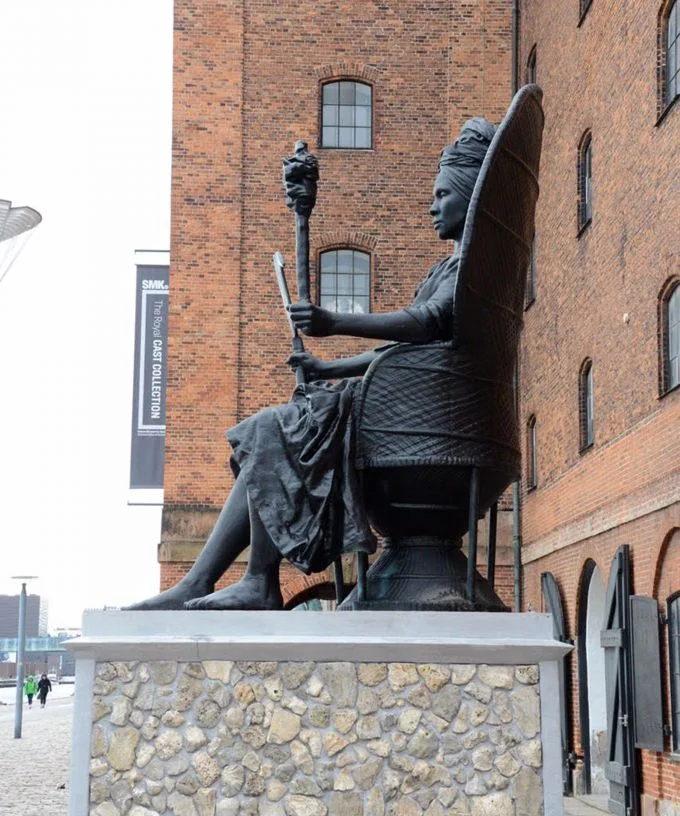Mary Thomas, Leader Of St. Croix 'Fireburn' Slave Rebellion, Honored In Denmark
/The statue of Mary Thomas called “I Am Queen Mary” is the first public monument to a black woman in Denmark, according to the artists. Credit: Nick Furbo
In Denmark, like most countries in the Western world, most public statues represent white men. For a 23 foot tall rebel queen to assume a prominent position represents a deliberate challenge to Denmark's collective memory about its own place in the history of slavery, writes The New York Times.
The sculpture was inspired by Mary Thomas, known as one of "the three queens." The three women leaders unleashed the 'Fireburn', an 1878 uprising on St. Croix, in which 50 plantations and most of the town of Frederiksted burned to the ground in what is considered to be the largest labor revolt in Danish colonial history.
“This project is about challenging Denmark’s collective memory and changing it,” the Virgin Islands artist La Vaughn Belle, one of two principal forces behind the statue, said in a statement.
After her conviction, Mary Thomas was not hanged -- which she surely would have been in America. She was sent to a women's prison in Copenhagen where her statue "I Am Queen Mary' sits in front of an original warehouse for Caribbean sugar and rum, a mere mile from where she was jailed.
The Danish artist Jeannette Ehlers, who teamed up with Virgin Islands artist La Vaughn Belle to create the “Queen Mary” monument, said, “Ninety-eight percent of the statues in Denmark are representing white males.”
Every detail of the statue is infused with meaning. Her seated pose “recalls the iconic 1967 photograph of Huey P. Newton, founder of the Black Panther Party.”
